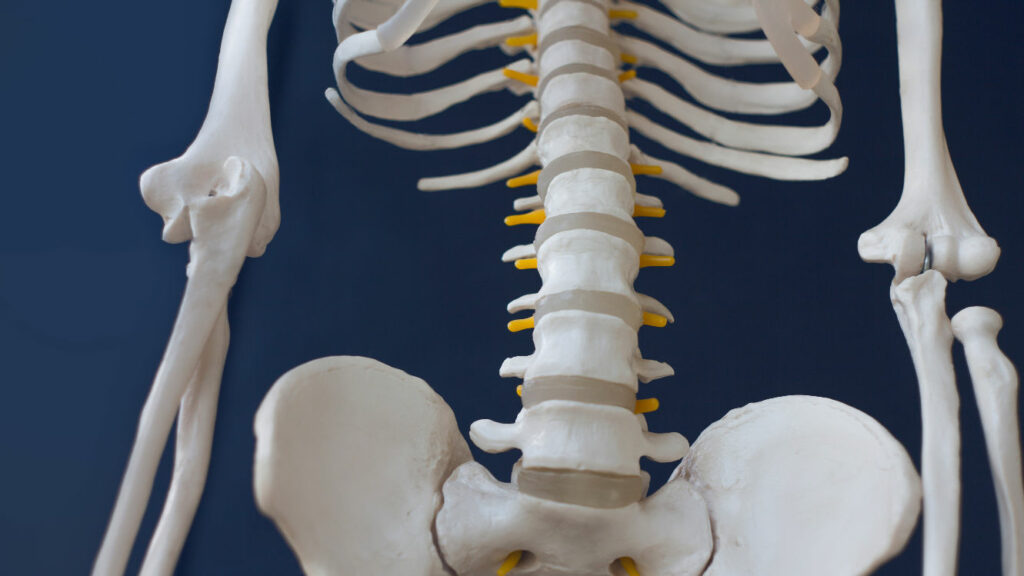Top 3 Myths About Low Back Pain

Think your disc is still herniated from an injury 5 years ago? You might be wrong!
Discs can heal just like the rest of your body heals. Surprised? We’ve got more where that came from.
This month’s educational theme is ‘Aches and Pains’ So we’re compiling all of our favorite tips on working through aches and pains. This week we’re re-capping last week’s workshop titled “Myth-Busting Low Back Pain.” If you missed it, you can catch the replay HERE.

Myth #1. Pain means something is out of alignment in my hips or back or something is damaged in there
We have good news for those of you who feel crooked: Unless you’ve been in a serious car accident or major fall, your hips and back can’t go out of alignment…that feeling of asymmetry is more likely some one-sided muscle tightness. Outside of serious trauma, there’s a 99% chance our bones and joints are in the same place they’ve always been.
Even better, back pain flare ups also don’t have to mean that anything is wrong with you or your back. Most of us (over 75%!) will experience low back pain, and it can be more helpful to think of it like a headache- most of the time it’s not serious, and there can be a lot of things contributing to it- other than something wrong with your brain or skull. Try to scan through the following list to see if you can figure out what is causing your pain flare:
- Too much activity too soon (spent a whole day moving!)
- Not enough activity over a long period of time (spent a whole day/week sitting)
- Poor sleep
- Inflammatory diet
- Generalized inflammation (illness, unhealthy lifestyle)
- High stress levels
- Tweaked something pretty bad yesterday (only this one requires some relative rest!)

Myth #2. My doctor told me I had a herniated disc a few years ago so I need to be more careful with my back.
More good news here: a whopping 30-80% of us are walking around, working, and exercising with a bulging disc and are totally unaware, even people in their 20s! Even more interesting is that 20-40% of us have herniated discs that are causing not even the slightest twinge of pain.
What this means for you is that you can relax a bit more when it comes to worrying about what somebody saw on an X-ray or MRI. Around 66% of disc herniations get re-absorbed by the body anyway, with the biggest injuries more likely to heal.
In fact, too much caution may take you away from the activities that you love and make your back even more sensitive to activities. If you want, we’ll help you ease back into the things you can’t do right now, or find ways to do them without pain!

Myth #3. If something hurts my back, I shouldn’t do it because it will make the problem worse.
Kind of. Generally you should avoid anything that causes your pain to sharply increase for more than 24 hours. But if you avoid everything that hurts, you may slowly lose more and more function as your body gets used to avoiding all discomfort. We usually recommend working through mild discomfort (3 or 4/10 pain) and seeing how your back feels the next day to guide whether or not that activity is safe to try again at the same intensity, keeping in mind that soreness is normal.
Keep in mind that the stronger your back is, that harder it will be to flare it up with activities like moving furniture!
We’re here to help you make you decisions about what to do and not do. Sign up for a FREE one-on-one with us to get personalized recommendations!
If you missed the webinar you can still catch the replay!
Contact Us
Don’t hesitate to get in touch with any questions or feedback. We’re here to help!
Register for Your Account
Register for an Account
Start the Sleep Challenge!
Schedule a Well-Being Strategy Call
Submit your information below and our team will respond ASAP!
Workplace Wellbeing Inquiry Form
Government Contracting Inquiry Form
Application
